Flexural Characteristics Evaluation for Reinforced Concrete Affected by Steel Corrosion Based on an Acoustic Emission Technique
Abstract
:1. Introduction
2. Materials and Experiments
2.1. Materials and Mixture
2.2. Specimen Preparation
2.3. Experimental Methods
2.3.1. Scheme Design
2.3.2. Electrical Accelerated Steel Corrosion
2.3.3. Bending Test
2.3.4. AE Test
3. Results and Discussion
3.1. Failure Forms and Ultimate Flexural Load Affected by Steel Corrosion
3.2. R/A-AF Association Analysis
3.3. Ib-Value Analysis
3.4. Localization of AE Events
- The sensors are placed only on the side surface of RC beams, so AE events can only be located in a two-dimensional way. However, AE events occur in a three-dimensional space in the RC beams, so the localization results of AE events are the projection of its spatial position on the plane where sensors are placed.
- The diffraction of AE signals due to the existence of cracks caused by steel corrosion hinders the propagation of signals, which makes an inaccurate AE signal transmission time and localization results.
- The AE signal is reflected during the propagation from the cracking position of the beam to the position of the sensor to cause attenuation of the wave. This process causes the signal from the actual cracking position to differ from the signal received by the sensor which could interfere with the judgment.
4. Conclusions
- (1)
- In general, the ultimate flexural load of the RC beam decreases along with steel corrosion. Interestingly, the ultimate flexural load of the 10% corroded RC beam was the largest instead of the uncorroded one; the reason is that failure form of the uncorroded RC beam is over-reinforced. It is proof that the balanced-reinforced RC structures should be designed to meet the requirements of compression and flexural strength.
- (2)
- The cracking failure modes of the corroded RC beams were analyzed according to the R/A and AF values and their association diagram. Results revealed that for each specimen, shear damage dominates during the loading process. Furthermore, the cracks’ type tends to transform from shear cracks to tensile cracks along with the increase of steel corrosion ratio.
- (3)
- Results concluded from Ib-value curves revealed that the proportion of larger-scale and stronger damage increases along with the steel corrosion. Furthermore, the trend of the Ib-value curve can reflect the formation and extension of cracks, which corresponds highly with the actual failure process and modes. Furthermore, a larger duration of the violent fluctuations in the Ib-value curve results in a higher the ultimate flexural load of the RC beam. Therefore, the violent degree of fluctuations for the Ib-value can be considered as the threshold to alert attention to the severity of the RC structures.
- (4)
- The location of cracks and their extension states can be determined by the two-dimensional localization technology of the AE signal. The denser the distribution of the AE events is, the higher the probability that cracks form in this region, which corresponds highly with the macroscopic morphology of cracks and provides a basis for further research on crack growth and spatial form.
Author Contributions
Acknowledgments
Conflicts of Interest
References
- Yanweerasak, T.; Kea, T.M.; Ishibashi, H.; Akiyama, M. Effect of Recycled Aggregate Quality on the Bond Behavior and Shear Strength of RC Members. Appl. Sci. 2018, 8, 2054. [Google Scholar] [CrossRef]
- Cheng, Y.; Zhang, Y.; Tan, G.; Jiao, Y. Effect of Crack on Durability of RC Material under the Chloride Aggressive Environment. Sustainability 2018, 10, 430. [Google Scholar] [CrossRef]
- Zhou, Y.; Gencturk, B.; Willam, K.; Attar, A. Carbonation-Induced and Chloride-Induced Corrosion in Reinforced Concrete Structures. J. Mater. Civ. Eng. 2014, 27, 46–70. [Google Scholar] [CrossRef]
- Jang, J.G.; Kim, H.K.; Kim, T.S.; Min, B.J.; Lee, H.K. Improved flexural fatigue resistance of PVA fiber-reinforced concrete subjected to freezing and thawing cycles. Constr. Build. Mater. 2014, 59, 129–135. [Google Scholar] [CrossRef]
- Cheng, Y.; Zhang, Y.; Jiao, Y.; Yang, J. Quantitative analysis of concrete property under effects of crack, freeze-thaw and carbonation. Constr. Build. Mater. 2016, 129, 106–115. [Google Scholar] [CrossRef]
- Dekoster, M.; François, B.B.; Maurel, O.; Delmas, Y. Modelling of flexural behaviour of RC Beams subjected to localised and uniform corrosion. Eng. Struct. 2003, 25, 1333–1341. [Google Scholar] [CrossRef]
- Sun, J.; Huang, Q.; Ren, Y. Performance deterioration of corroded RC beams and reinforcing bars under repeated loading. Constr. Build. Mater. 2015, 96, 404–415. [Google Scholar] [CrossRef]
- Ye, Z.; Zhang, W.; Gu, X. Deterioration of shear behavior of corroded reinforced concrete beams. Eng. Struct. 2018, 168, 708–720. [Google Scholar] [CrossRef]
- Lv, H.L.; Wu, Y.Z.; Fang, Z.N.; Zhou, S.C. Deterioration behavior of reinforced concrete beam under compound effects of acid-salt mist and carbon dioxide. Constr. Build. Mater. 2015, 77, 253–259. [Google Scholar] [CrossRef]
- Li, H.; Li, B.; Jin, R.; Li, S.; Yu, J.G. Effects of sustained loading and corrosion on the performance of reinforced concrete beams. Constr. Build. Mater. 2018, 169, 179–187. [Google Scholar] [CrossRef]
- Berrocal, C.G.; Löfgren, I.; Lundgren, K. The effect of fibres on steel bar corrosion and flexural behaviour of corroded RC beams. Eng. Struct. 2018, 163, 409–425. [Google Scholar] [CrossRef]
- Bicer, K.; Yalciner, H.; Pekrioglu Balkıs, A.; Kumbasaroglu, A. Effect of corrosion on flexural strength of reinforced concrete beams with polypropylene fibers. Constr. Build. Mater. 2018, 185, 574–588. [Google Scholar] [CrossRef]
- Nikbakht, E.; Al-Fakih, A.; Hui, C.C.; Jake, L.Y.; Mahzabin, M.S. An experimental investigation on the shear and flexural behavior of steel reinforced HPSCC beams. Structures 2019, 19, 286–295. [Google Scholar] [CrossRef]
- Kocur, G.K.; Saenger, E.H.; Grosse, C.U.; Vogel, T. Time reverse modeling of acoustic emissions in a reinforced concrete beam. Ultrasonics 2016, 65, 96–104. [Google Scholar] [CrossRef]
- Ohtsu, M. Acoustic Emission and Related Non-Destructive Evaluation Techniques in the Fracture Mechanics of Concrete: Fundamentals and Applications; Woodhead Publishing Series in Civil and Structural Engineering; Elsevier: Amsterdam, The Netherlands, 2015. [Google Scholar]
- Suzuki, T.; Obtsu, M. Quantitative damage evaluation of structural concrete by a compression test based on AE rate process analysis core test of concrete. Constr. Build. Mater. 2004, 3, 197–202. [Google Scholar] [CrossRef]
- Raghu Prasad, B.K.; Sagar, R.V. Relationship between AE energy and fracture energy of plain concrete beams: Experimental study. J. Mater. Civ. Eng. 2008, 3, 212–220. [Google Scholar] [CrossRef]
- Geng, J.; Sun, Q.; Zhang, Y.; Cao, L.; Zhang, W. Studying the dynamic damage failure of concrete based on acoustic emission. Constr. Build. Mater. 2017, 149, 9–16. [Google Scholar] [CrossRef]
- Li, B.; Xu, L.; Shi, Y.; Chi, Y.; Liu, Q.; Li, C. Effects of fiber type, volume fraction and aspect ratio on the flexural and acoustic emission behaviors of steel fiber reinforced concrete. Constr. Build. Mater. 2018, 181, 474–486. [Google Scholar] [CrossRef]
- Bhosale, A.; Rasheed, M.; Prakash, S.S.; Raju, G. A study on the efficiency of steel vs. synthetic vs. hybrid fibers on fracture behavior of concrete in flexure using acoustic emission. Constr. Build. Mater. 2019, 199, 256–268. [Google Scholar] [CrossRef]
- Xu, J.; Shu, S.; Han, Q.; Liu, C. Experimental research on bond behavior of reinforced recycled aggregate concrete based on the acoustic emission technique. Constr. Build. Mater. 2018, 191, 1230–1241. [Google Scholar] [CrossRef]
- Tam, N.T.; Narintsoa, R.; Jean-Paul, B. Characterization of damage in concrete beams under bending with Acoustic Emission Technique (AET). Constr. Build. Mater. 2018, 187, 487–500. [Google Scholar]
- Tsangouri, E.E. Assessment of Acoustic Emission localization accuracy on damaged and healed concrete. Constr. Build. Mater. 2016, 129, 163–171. [Google Scholar] [CrossRef]
- Di, B.; Wang, J.; Li, H.; Zheng, J.; Zheng, Y.; Song, G. Investigation of Bonding Behavior of FRP and Steel Bars in Self-Compacting Concrete Structures Using Acoustic Emission Method. Sensors 2019, 19, 159. [Google Scholar] [CrossRef]
- Ministry of Housing and Urban-Rural Development of the People’s Republic of China. Standard for Quality Control of Concrete; Ministry of Housing and Urban-Rural Development of the People’s Republic of China: Beijing, China, 2011. (In Chinese)
- Ministry of Housing and Urban-Rural Development of the People’s Republic of China. Code for Design of Concrete Structures; Ministry of Housing and Urban-Rural Development of the People’s Republic of China: Beijing, China, 2011. (In Chinese)
- Liu, R.; Jiang, L.; Xu, J.; Xiong, C.; Song, Z. Influence of carbonation on chloride-induced reinforcement corrosion in simulated concrete pore solutions. Constr. Build. Mater. 2014, 56, 16–20. [Google Scholar] [CrossRef]
- Tondolo, F. Bond behaviour with reinforcement corrosion. Constr. Build. Mater. 2015, 93, 926–932. [Google Scholar] [CrossRef]
- Gao, Z.; Liang, R.; Patnaik, A. Effects of sustained loading and pre-existing cracks on corrosion behavior of reinforced concrete slabs. Constr. Build. Mater. 2016, 124, 776–785. [Google Scholar] [CrossRef]
- Ohtsu, M.; Isoda, T.; Tomoda, Y. Acoustic emission techniques standardized for concrete structures. J. Acoust. Emiss. 2007, 25, 21–32. [Google Scholar]
- Han, Q.; Yang, G.; Xu, J.; Fu, Z.; Lacidogna, G.; Carpinteri, A. Acoustic emission data analyses based on crumb rubber concrete beam bending tests. Eng. Fract. Mech. 2018, in press. [Google Scholar] [CrossRef]
- Shiotani, T.; Yuyama, S.; Li, Z.W.; Ohtsu, M. Application of AE improved b-value to quantitative evaluation of fracture process in concrete materials. J. Acoust. Emiss. 2001, 19, 118–133. [Google Scholar]
- Cheng, Y.; Zhang, Y.; Wu, C. Experimental and Simulation Study on Diffusion Behavior of Chloride Ion in Cracking Concrete and Reinforcement Corrosion. Adv. Mater. Sci. Eng. 2018, 12, 1–14. [Google Scholar] [CrossRef]
- Guo, Q.; Cheng, Y.; Tao, J. Research of Aggregate Adhesion Effect Segmentation Method in Asphalt Concrete Digital Image. J. Highw. Transp. Res. Dev. 2015, 32, 32–36. [Google Scholar]


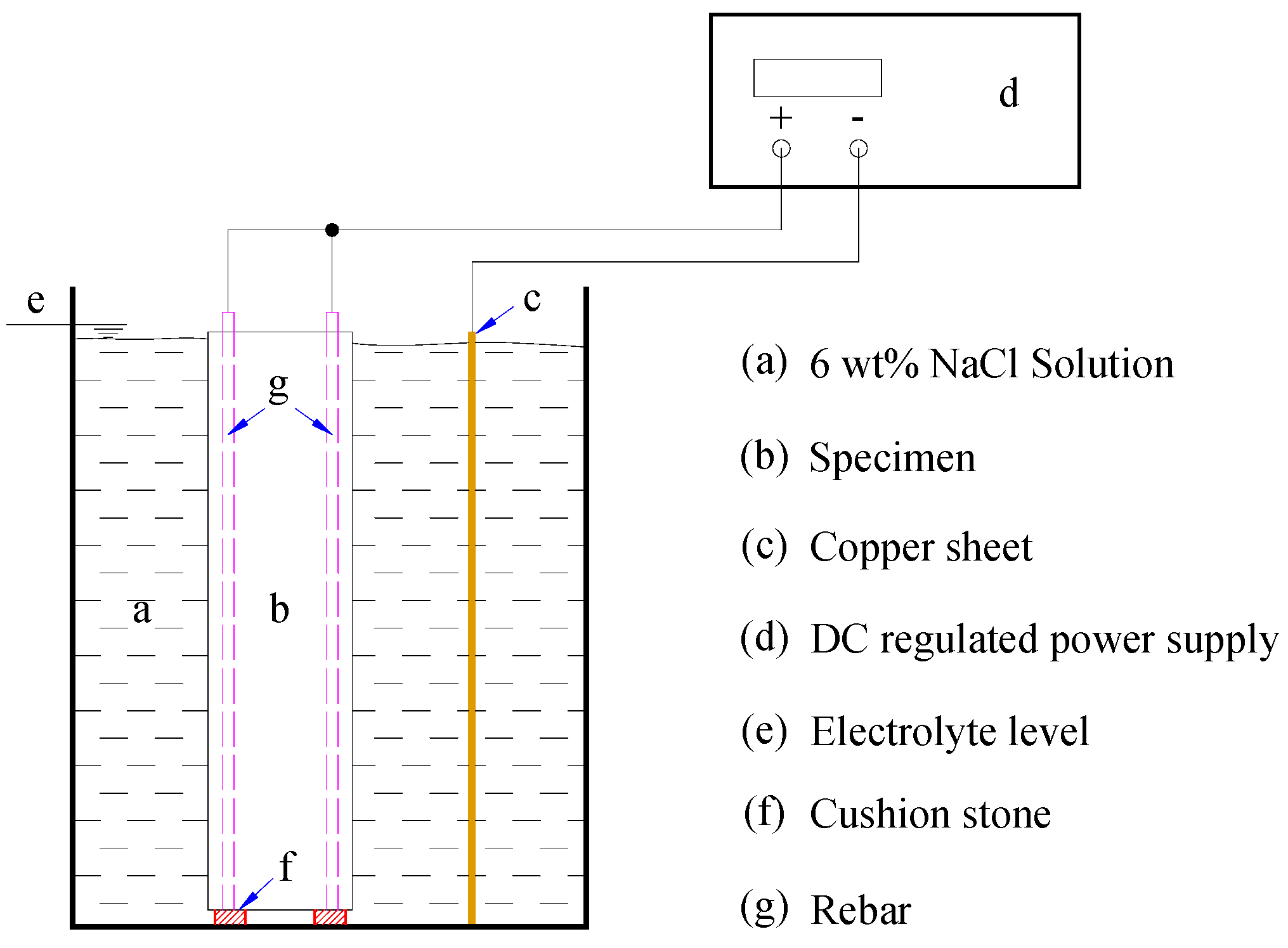
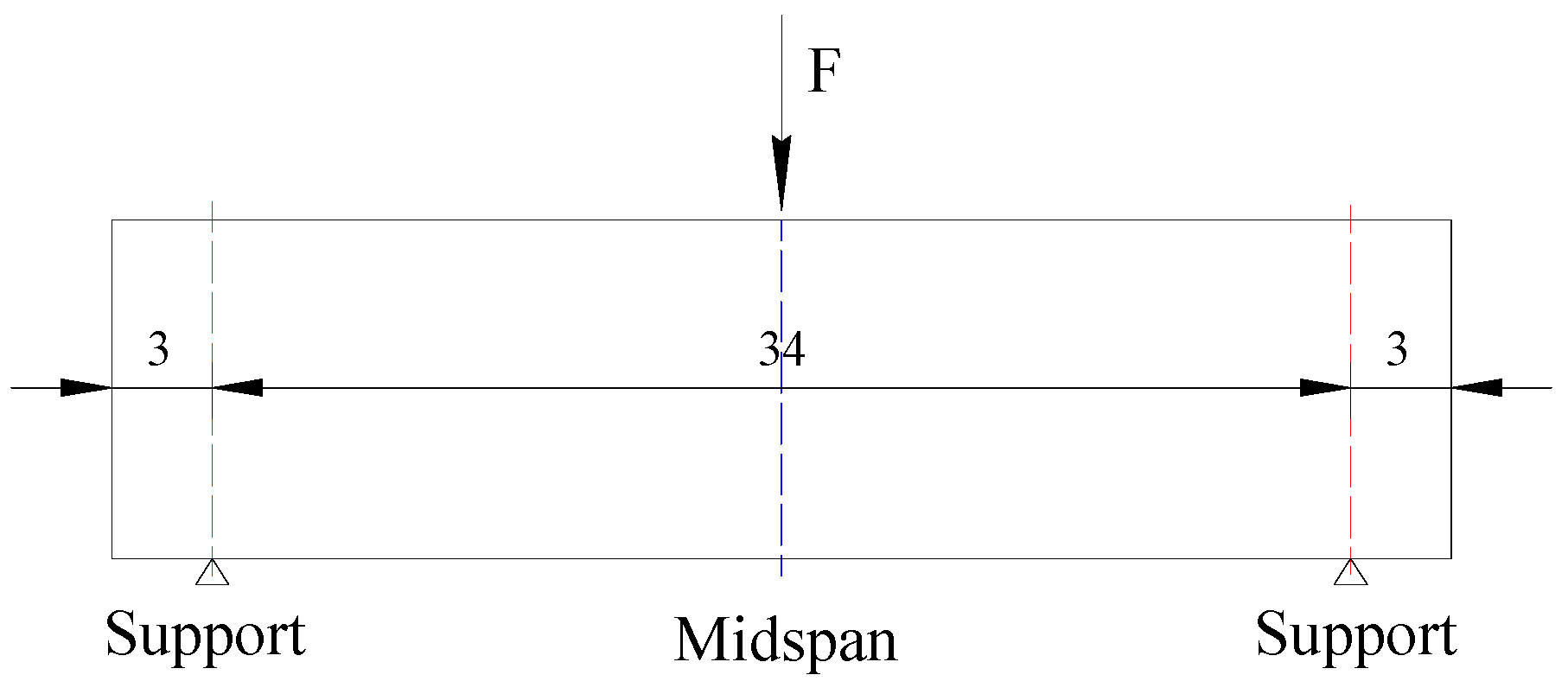


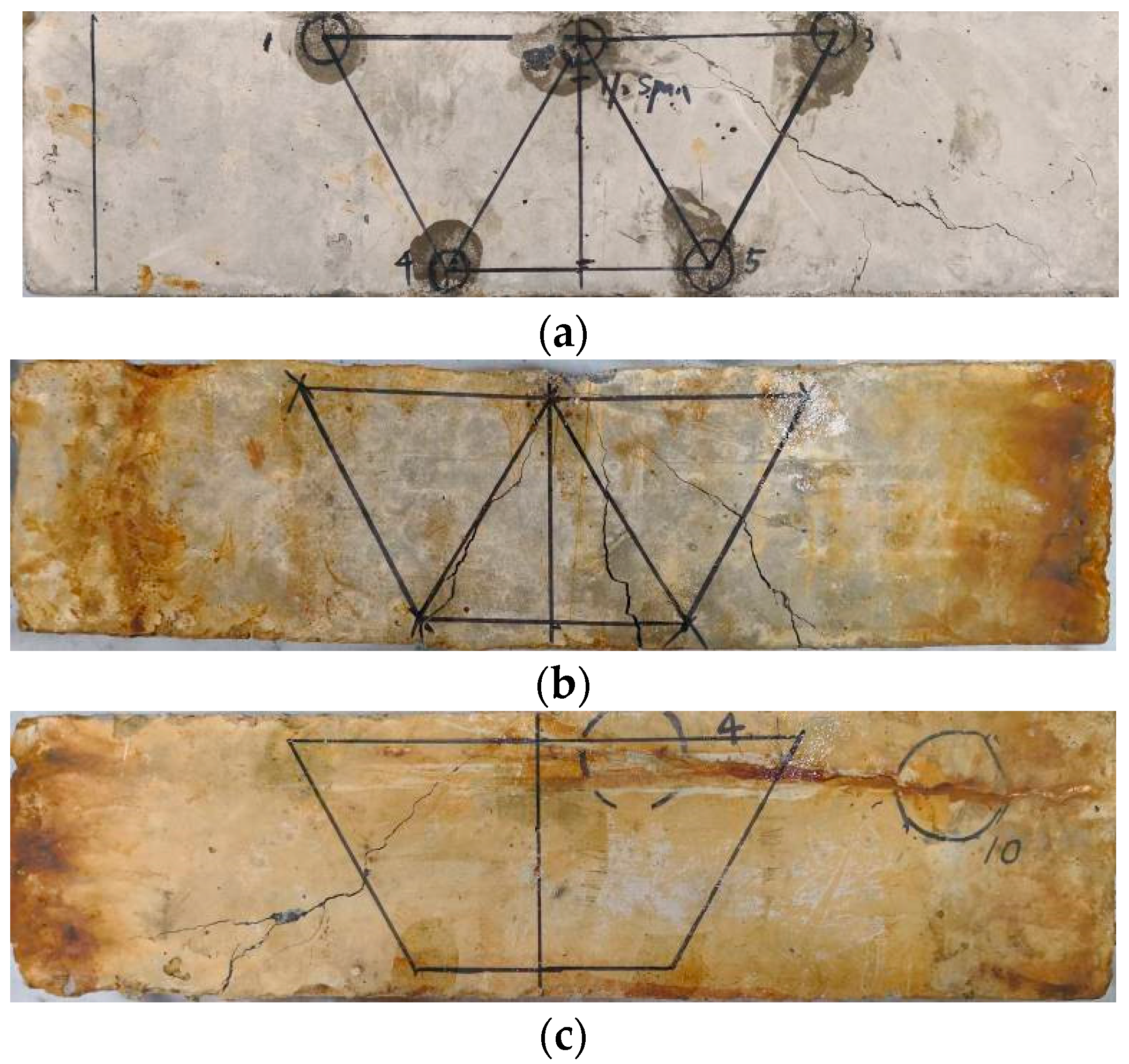
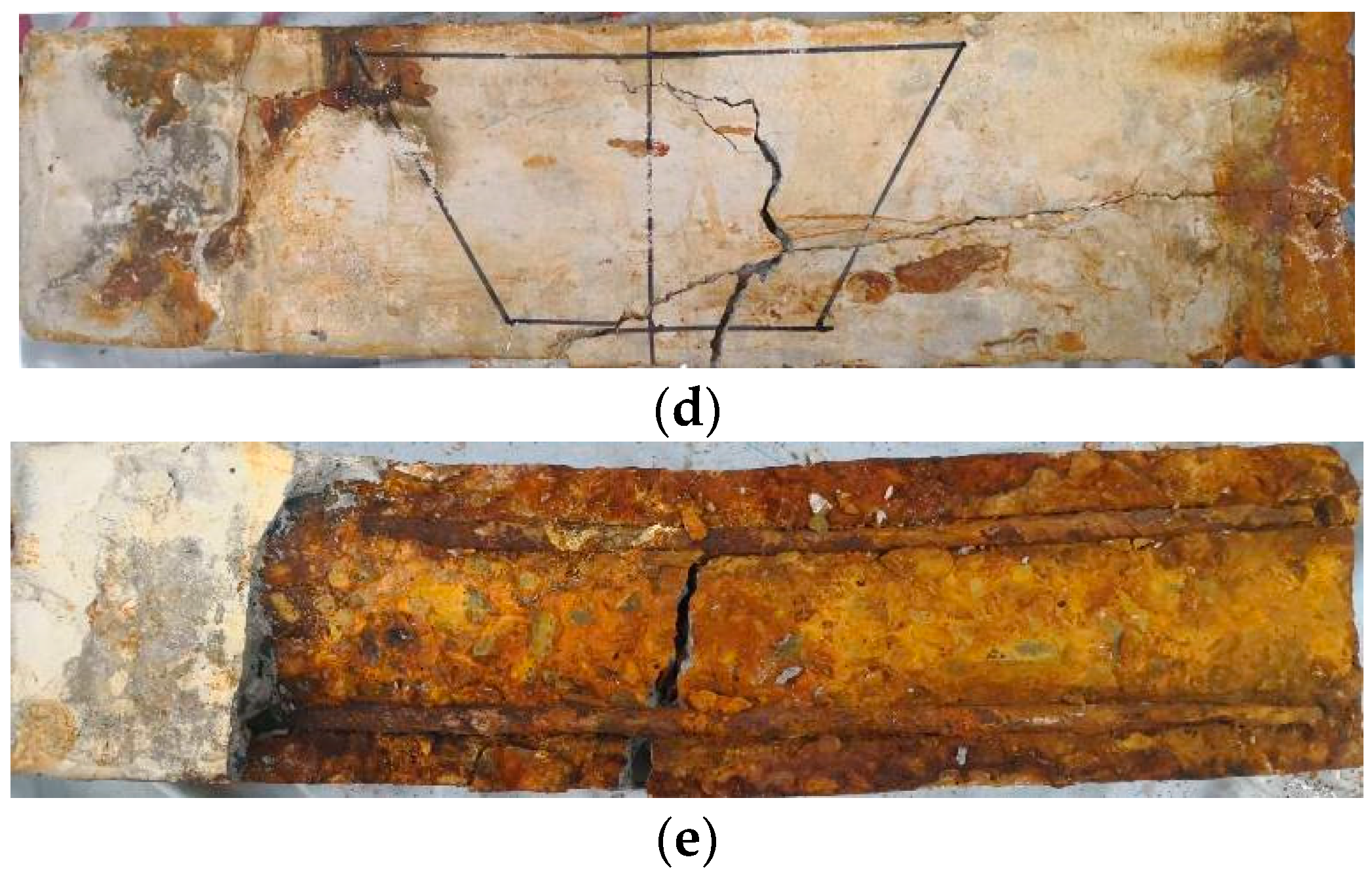
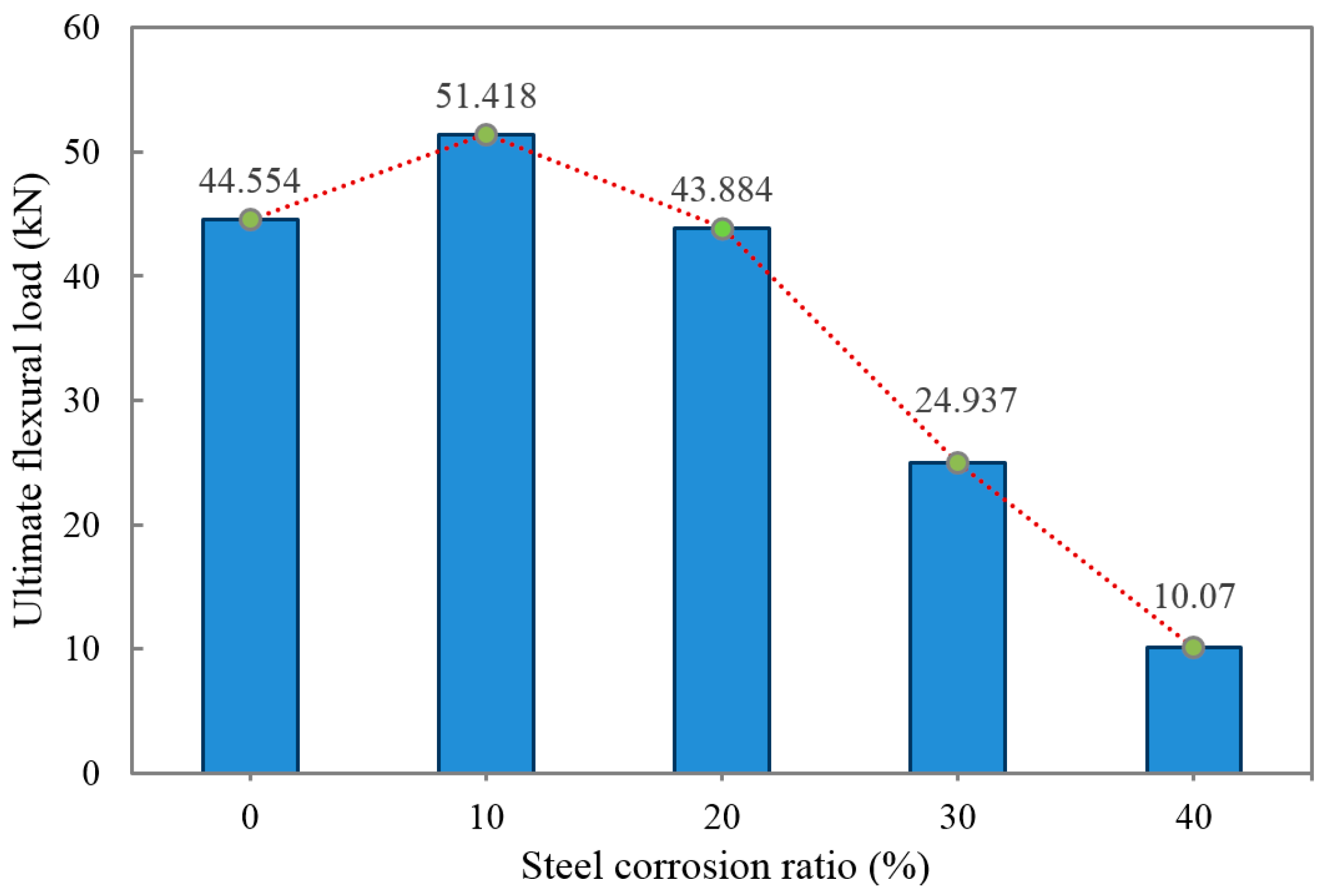


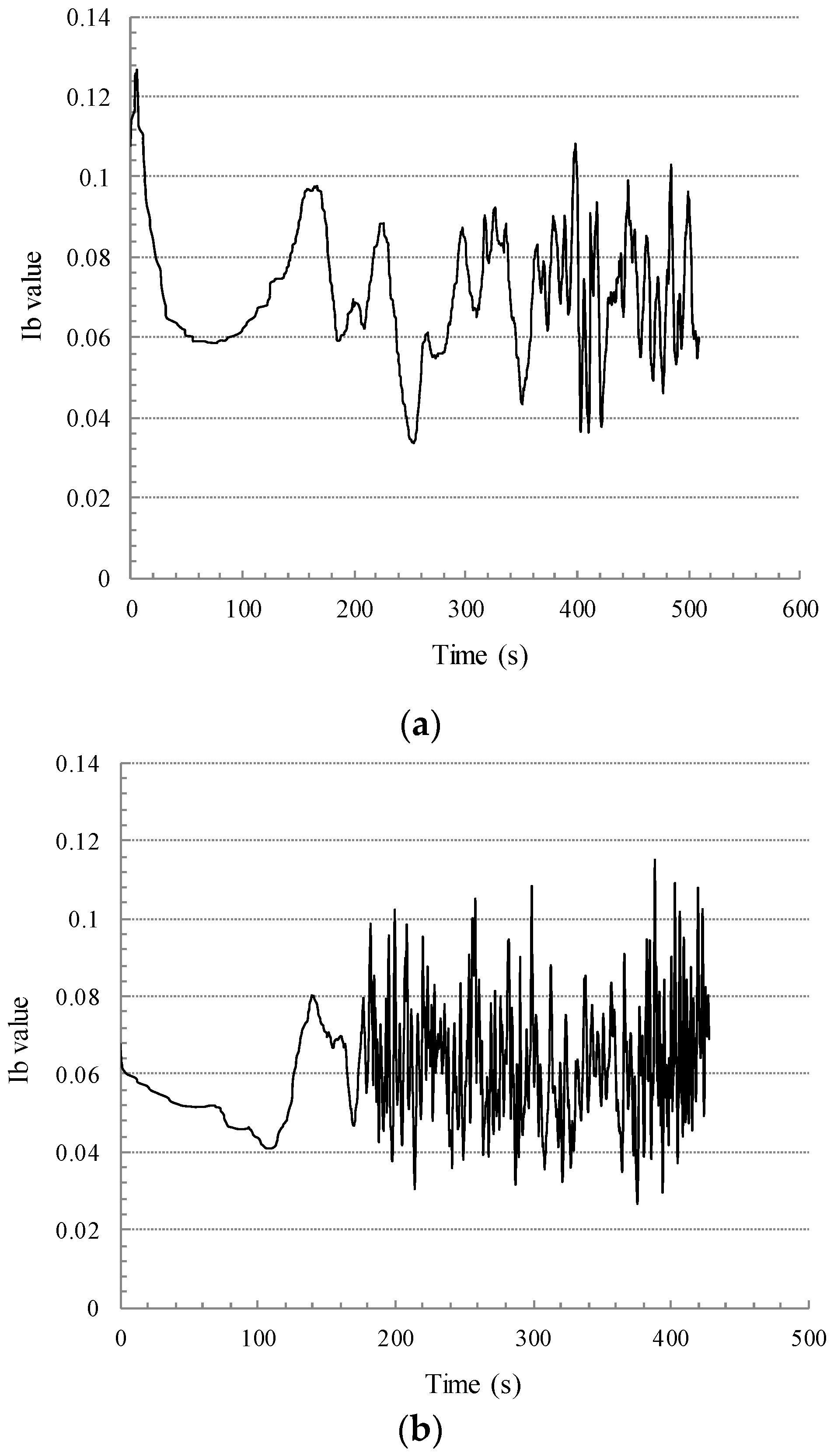
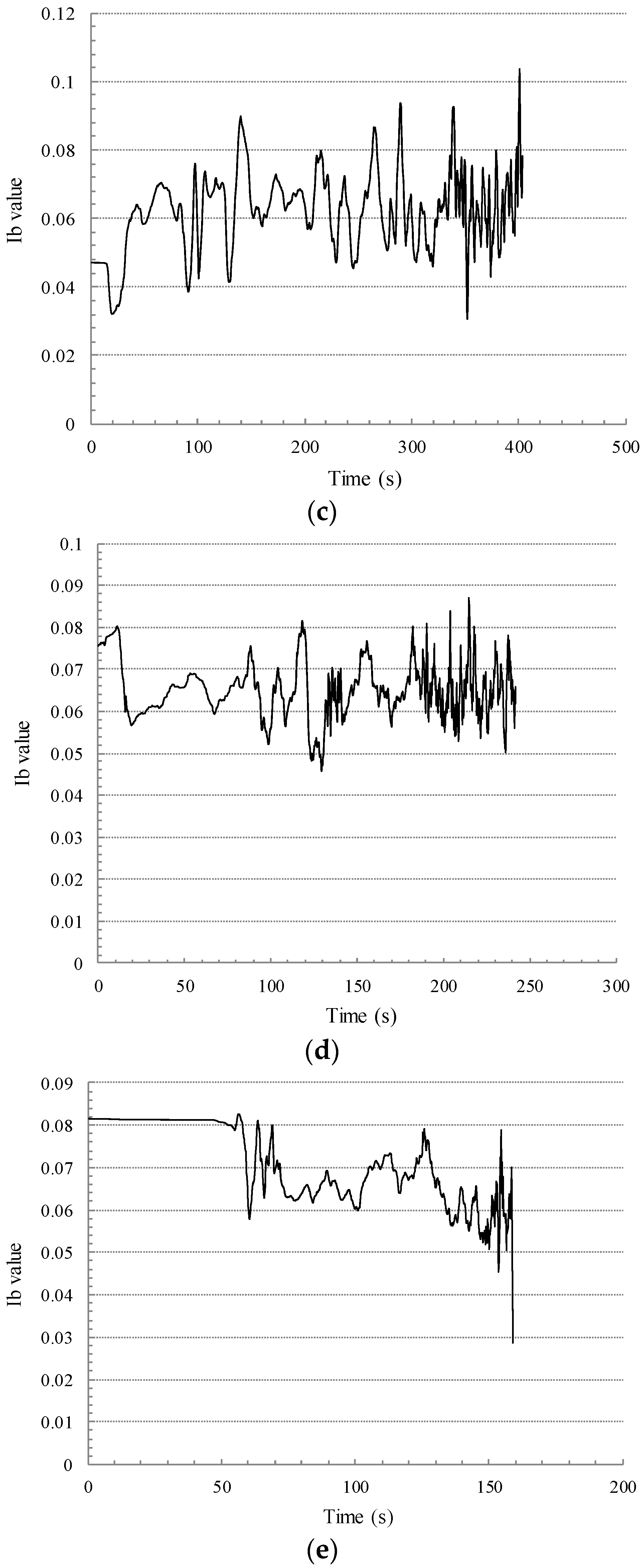
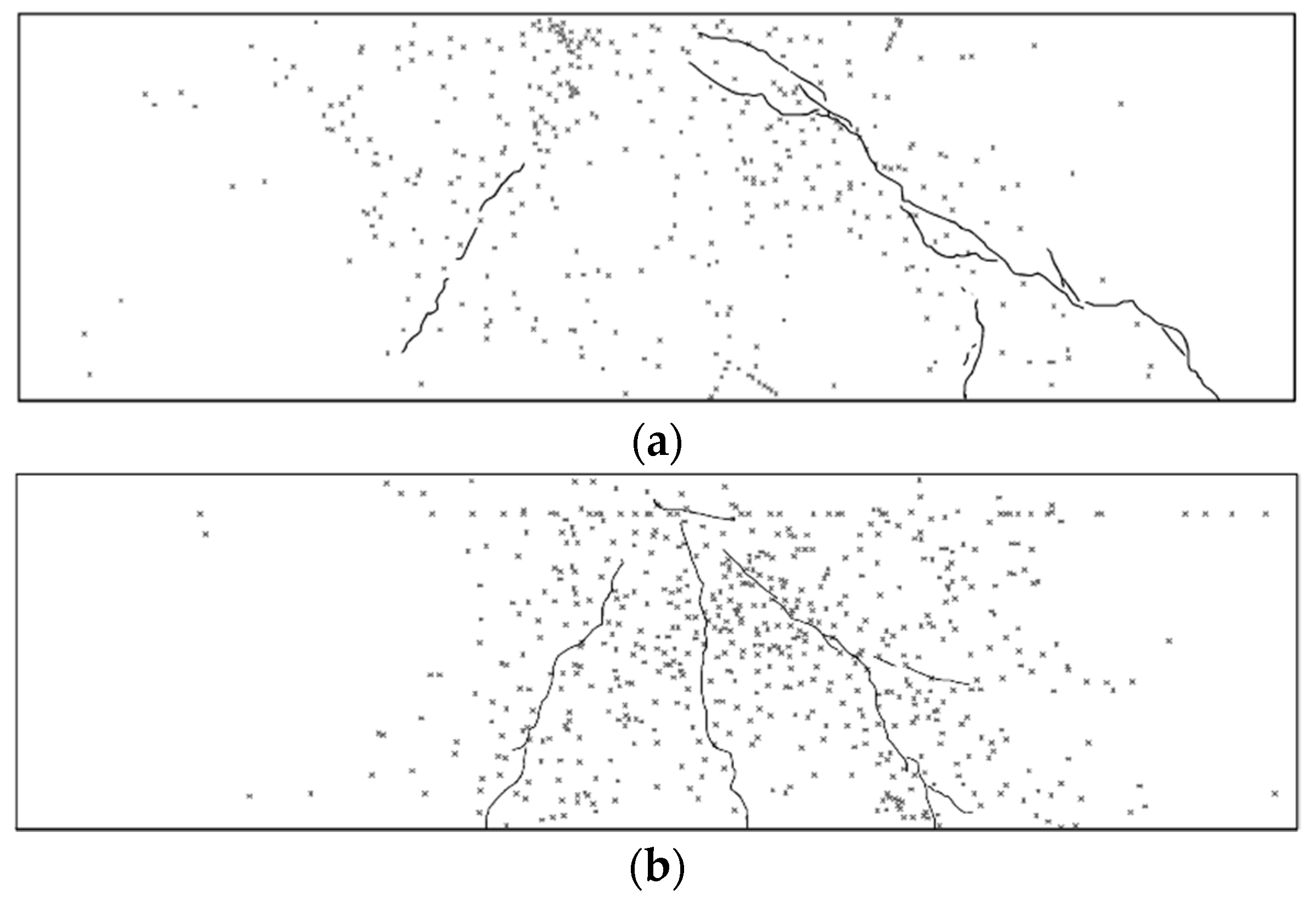
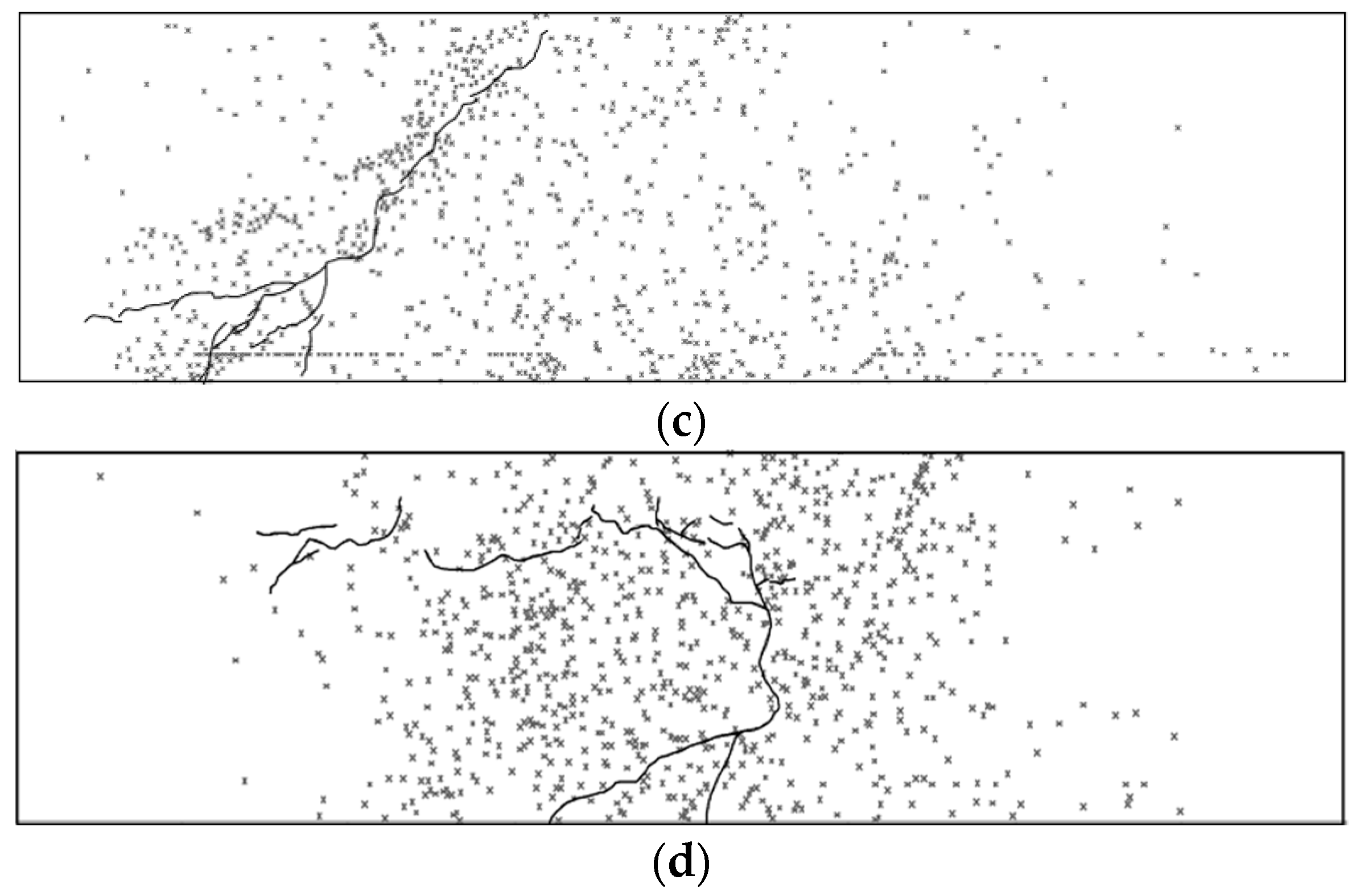
| Materials | Nominal Proportions (kg/m3) |
|---|---|
| Cement | 433 |
| Water | 195 |
| Fine aggregate | 567 |
| Coarse aggregate | 1205 |
| Steel Corrosion Ratio | Average Line Density (kg/m) | Corrosion Length (mm) | Mass Loss (g) | Corrosion Duration (s) | Current Intensity (A) |
|---|---|---|---|---|---|
| 10% | 0.395 | 40 | 15.8 | 86,400 | 0.63 |
| Ib-Value Curves for RC Beams | Maximum Value | Minimum Value |
|---|---|---|
| Uncorroded RC beam | 0.129 | 0.032 |
| 10% corroded RC beam | 0.116 | 0.031 |
| 20% corroded RC beam | 0.104 | 0.031 |
| 30% corroded RC beam | 0.087 | 0.046 |
| 40% corroded RC beam | 0.083 | 0.028 |
© 2019 by the authors. Licensee MDPI, Basel, Switzerland. This article is an open access article distributed under the terms and conditions of the Creative Commons Attribution (CC BY) license (http://creativecommons.org/licenses/by/4.0/).
Share and Cite
Zhang, Y.; Tan, G.; Wang, S.; Cheng, Y.; Yang, S.; Sun, X. Flexural Characteristics Evaluation for Reinforced Concrete Affected by Steel Corrosion Based on an Acoustic Emission Technique. Appl. Sci. 2019, 9, 1640. https://doi.org/10.3390/app9081640
Zhang Y, Tan G, Wang S, Cheng Y, Yang S, Sun X. Flexural Characteristics Evaluation for Reinforced Concrete Affected by Steel Corrosion Based on an Acoustic Emission Technique. Applied Sciences. 2019; 9(8):1640. https://doi.org/10.3390/app9081640
Chicago/Turabian StyleZhang, Yuwei, Guojin Tan, Shurong Wang, Yongchun Cheng, Shuting Yang, and Xun Sun. 2019. "Flexural Characteristics Evaluation for Reinforced Concrete Affected by Steel Corrosion Based on an Acoustic Emission Technique" Applied Sciences 9, no. 8: 1640. https://doi.org/10.3390/app9081640





